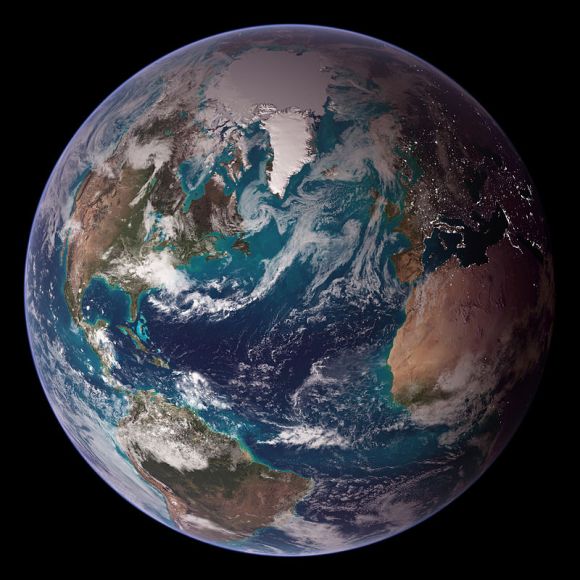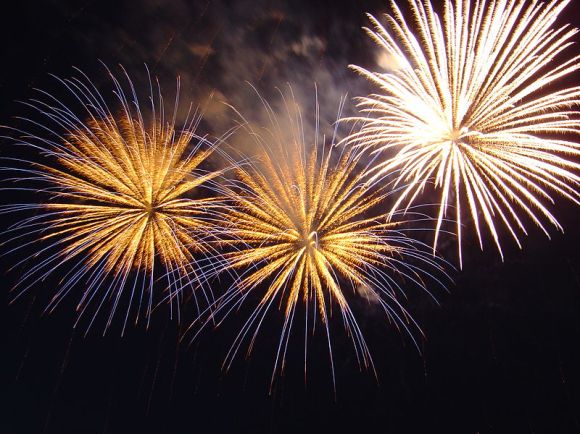
Have you ever wished you had just a little more time? Well, you should have been more specific!
Everyone knows about leap years. Once every four years, an extra day is added to the end of February so that the calendar year synchronizes with the astronomical or seasonal year. But, have you ever heard of a leap second?
A leap second occurs when an extra second added to astronomical time is necessary to keep in line with the universal atomic clock. Astronomical time was the universal standard until the atomic clock came into use in 1958. Then, it was discovered that irregularities in the earth’s rotation meant the two standards of time were out of sync.
▼ Nobody’s perfect. Not even the Earth.
Leap seconds have been used sparingly since 1972. The latest one was about one and a half years ago on July 1st, 2015. The International Earth Rotation and Reference Systems Service (IERS) in France makes the final call, and the National Institute of Information and Communications Technology (NITS) in Japan complies.
It has been determined that the next leap second will take place on December 31st, 2016 at 11:59 p.m. Accounting for the time difference, it will take place in Japan on January 1st, 2017.
▼ That means a whole extra second of fireworks!
That also gives you another second to eat Yoshinoya, study Japanese, wait for the train, or play Pokémon GO. Use it wisely!
References: Wikipedia (Leap Year), IERS
Featured images: Wikimedia Commons/Postelwijn
Images: Wikimedia Commons/NASA, Wikimedia Commons/Ondrejk
[ Read in Japanese ]



 Flashing green orb seen shooting across sky in Japan【Video】
Flashing green orb seen shooting across sky in Japan【Video】 Google Japan unveils tea-cup shaped keyboard with open-source all-fish input system
Google Japan unveils tea-cup shaped keyboard with open-source all-fish input system Moon set to vanish and turn red as part of tonight’s spectacular lunar eclipse
Moon set to vanish and turn red as part of tonight’s spectacular lunar eclipse How many licks does it take to get to the center of the Earth? We’re about to find out
How many licks does it take to get to the center of the Earth? We’re about to find out Osaka man imprisoned on rape conviction released in exceptional reversal of charges
Osaka man imprisoned on rape conviction released in exceptional reversal of charges McDonald’s new Happy Meals offer up cute and practical Sanrio lifestyle goods
McDonald’s new Happy Meals offer up cute and practical Sanrio lifestyle goods All-you-can-drink Starbucks and amazing views part of Tokyo’s new 170 meter-high sky lounge
All-you-can-drink Starbucks and amazing views part of Tokyo’s new 170 meter-high sky lounge More foreign tourists than ever before in history visited Japan last month
More foreign tourists than ever before in history visited Japan last month Starbucks reopens at Shibuya Scramble Crossing with new look and design concept
Starbucks reopens at Shibuya Scramble Crossing with new look and design concept Beautiful Sailor Moon manhole cover coasters being given out for free by Tokyo tourist center
Beautiful Sailor Moon manhole cover coasters being given out for free by Tokyo tourist center Mister Donut ready to make hojicha dreams come true in latest collab with Kyoto tea merchant
Mister Donut ready to make hojicha dreams come true in latest collab with Kyoto tea merchant Hamster abandoned at Tokyo ramen restaurant gets new home
Hamster abandoned at Tokyo ramen restaurant gets new home The oldest tunnel in Japan is believed to be haunted, and strange things happen when we go there
The oldest tunnel in Japan is believed to be haunted, and strange things happen when we go there Beautiful new Final Fantasy T-shirt collection on the way from Uniqlo【Photos】
Beautiful new Final Fantasy T-shirt collection on the way from Uniqlo【Photos】 Pizza Hut releases a turtle pizza that looks like a Teenage Mutant Ninja Turtle
Pizza Hut releases a turtle pizza that looks like a Teenage Mutant Ninja Turtle Disney princesses get official manga makeovers for Manga Princess Cafe opening in Tokyo
Disney princesses get official manga makeovers for Manga Princess Cafe opening in Tokyo Is the new Shinkansen Train Desk ticket worth it?
Is the new Shinkansen Train Desk ticket worth it? Foreign English teachers in Japan pick their favorite Japanese-language phrases【Survey】
Foreign English teachers in Japan pick their favorite Japanese-language phrases【Survey】 Japanese convenience store packs a whole bento into an onigiri rice ball
Japanese convenience store packs a whole bento into an onigiri rice ball We try out “Chan Ramen”, an underground type of ramen popular in the ramen community
We try out “Chan Ramen”, an underground type of ramen popular in the ramen community Studio Ghibli releases Kiki’s Delivery Service chocolate cake pouches in Japan
Studio Ghibli releases Kiki’s Delivery Service chocolate cake pouches in Japan Japan’s bone-breaking and record-breaking roller coaster is permanently shutting down
Japan’s bone-breaking and record-breaking roller coaster is permanently shutting down New definition of “Japanese whiskey” goes into effect to prevent fakes from fooling overseas buyers
New definition of “Japanese whiskey” goes into effect to prevent fakes from fooling overseas buyers Our Japanese reporter visits Costco in the U.S., finds super American and very Japanese things
Our Japanese reporter visits Costco in the U.S., finds super American and very Japanese things Studio Ghibli unveils Mother’s Day gift set that captures the love in My Neighbour Totoro
Studio Ghibli unveils Mother’s Day gift set that captures the love in My Neighbour Totoro Foreign passenger shoves conductor on one of the last full runs for Japan’s Thunderbird train
Foreign passenger shoves conductor on one of the last full runs for Japan’s Thunderbird train Domino’s Japan now sells…pizza ears?
Domino’s Japan now sells…pizza ears? New Japanese KitKat flavour stars Sanrio characters, including Hello Kitty
New Japanese KitKat flavour stars Sanrio characters, including Hello Kitty Kyoto creates new for-tourist buses to address overtourism with higher prices, faster rides
Kyoto creates new for-tourist buses to address overtourism with higher prices, faster rides Sales of Japan’s most convenient train ticket/shopping payment cards suspended indefinitely
Sales of Japan’s most convenient train ticket/shopping payment cards suspended indefinitely Sold-out Studio Ghibli desktop humidifiers are back so Totoro can help you through the dry season
Sold-out Studio Ghibli desktop humidifiers are back so Totoro can help you through the dry season Japanese government to make first change to romanization spelling rules since the 1950s
Japanese government to make first change to romanization spelling rules since the 1950s Ghibli founders Toshio Suzuki and Hayao Miyazaki contribute to Japanese whisky Totoro label design
Ghibli founders Toshio Suzuki and Hayao Miyazaki contribute to Japanese whisky Totoro label design Doraemon found buried at sea as scene from 1993 anime becomes real life【Photos】
Doraemon found buried at sea as scene from 1993 anime becomes real life【Photos】 Tokyo’s most famous Starbucks is closed
Tokyo’s most famous Starbucks is closed One Piece characters’ nationalities revealed, but fans have mixed opinions
One Piece characters’ nationalities revealed, but fans have mixed opinions We asked a Uniqlo employee what four things we should buy and their suggestions didn’t disappoint
We asked a Uniqlo employee what four things we should buy and their suggestions didn’t disappoint Princesses, fruits, and blacksmiths: Study reveals the 30 most unusual family names in Japan
Princesses, fruits, and blacksmiths: Study reveals the 30 most unusual family names in Japan Japanese astrophysicists assure us that we have a long time before our universe rips apart
Japanese astrophysicists assure us that we have a long time before our universe rips apart Do Japanese people hate Americans? Hiroshima teen has touching answer on atomic bomb anniversary
Do Japanese people hate Americans? Hiroshima teen has touching answer on atomic bomb anniversary “HOW much?!” Professor estimates appropriate salary for housewives, housewife actresses gasp
“HOW much?!” Professor estimates appropriate salary for housewives, housewife actresses gasp Anime’s Tetsuwan Atom/Astro Boy shows up on a pedestrian walk signal in Japan
Anime’s Tetsuwan Atom/Astro Boy shows up on a pedestrian walk signal in Japan Yoshinoya has an ultra-luxurious wagyu beef bowl you can only get one place in Japan【Taste test】
Yoshinoya has an ultra-luxurious wagyu beef bowl you can only get one place in Japan【Taste test】 U.S. military in Japan bulk buys Japanese scallops as China’s Japanese seafood ban continues
U.S. military in Japan bulk buys Japanese scallops as China’s Japanese seafood ban continues High school gymnastics team brings much needed humor, Attack on Titan to competitions
High school gymnastics team brings much needed humor, Attack on Titan to competitions Funny gag video suggests China is dominating Olympic diving because of magic powers
Funny gag video suggests China is dominating Olympic diving because of magic powers “Can you help meow-t here?” Twitter user discovers why his bread clock was constantly wrong
“Can you help meow-t here?” Twitter user discovers why his bread clock was constantly wrong Clever alarm system invented by Japanese railway company will wake even the deepest of sleepers
Clever alarm system invented by Japanese railway company will wake even the deepest of sleepers This ‘Wonder Material’ Could Make Your Next Phone Super Thin With Internet That’s 100x Faster
This ‘Wonder Material’ Could Make Your Next Phone Super Thin With Internet That’s 100x Faster We visit a train station in historical ninja town, see ninja trick art, and become ninjas ourselves
We visit a train station in historical ninja town, see ninja trick art, and become ninjas ourselves Turn your smartphone into a telescope and take pictures of outer space with new device
Turn your smartphone into a telescope and take pictures of outer space with new device Tokyo’s 7 coolest public art pieces
Tokyo’s 7 coolest public art pieces 70 years ago today: The moment the US deployed the most powerful weapon known to man
70 years ago today: The moment the US deployed the most powerful weapon known to man
Leave a Reply